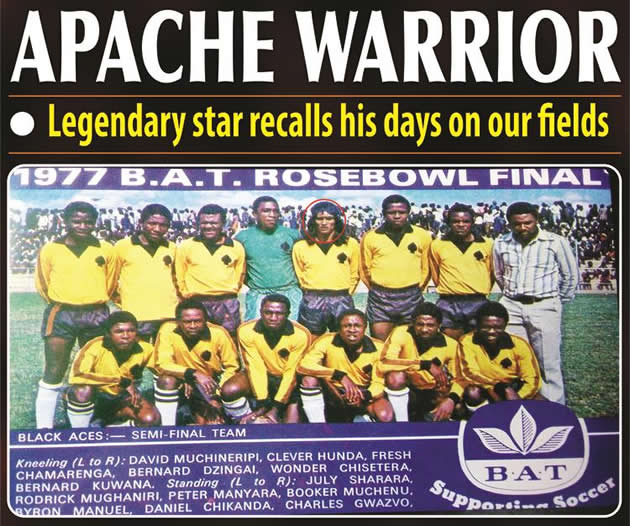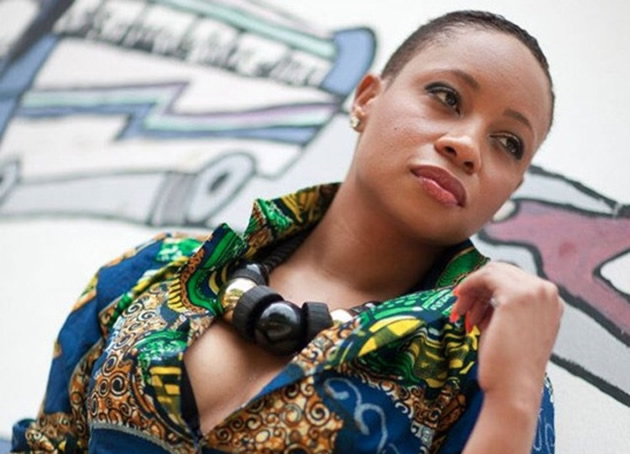Apache Warrior…Legendary star recalls his days on our fields

 Collin Matiza Sports Editor
Collin Matiza Sports Editor
BRUCE GROBBELAAR called him the “Apache Warrior”, the fans called him “Piri Piri”, and Byron Manuel was a trailblazer in Zimbabwe football. In the late 1960s to the early 1980s it was a common sight in this country to see white football players playing against black stars or rubbing shoulders with them at both club and national team level.
There was a great rivalry between these players who used to turn up for local clubs like Salisbury Callies, Arcadia United, Chibuku Shumba (which later became Black Aces), Bulawayo Sables, Salisbury Sables, Tornadoes, Mangula, Metal Box, Rio Tinto, Dynamos, Matabeleland Highlanders (now Highlanders), Mashonaland United (now Zimbabwe Saints) and Wankie (now Hwange).
There were a number of talented white players who emerged on the scene like Grobbelaar, Jimmy Gilpin, Walter Lawrie, Topsy Robertson, Regie Sheasby, Rob Jordan, Brian Pearce, Graham Boyle, Tommy Ballantyne, Billy Sharman, Boet van Ays, Derick Petrie and John “Seke Muchena” Humphreys.
The country also produced a number of talented players from the mixed race (Coloureds) who included 1978 Soccer Star of the Year George “TNT” Rollo, Majid Dhana, Reg Payne, Doorman Moodley, Herman Hendricks, Maxwell Joseph, Jimmy Finch, Hedley Layton, Bethal “Kaboots” Salis, Charles “Maskiri” White, Reg Paizee, Goosey Galloway, Alwyn Hagen, Cornelius Elijah and Stewart “Sikalo” Gilbert.
But there was a rare breed of a player who also used to grace the local stadiums in the 1970s and the better part of the early 1980s — he was of the “Red Indian” origin and his name was Byron Manuel.
During the 1970s and 1980s, Zimbabwe produced a number of utility players who could play either as a defender, midfielder or striker and Manuel was also among a rare breed of such footballers.
When Zimbabwe gained Independence in 1980, Manuel was already a household name in the local football circles as he turned out for Chibuku Shumba, Black Aces and Rio Tinto and he was a favourite among the fans.
Manuel was one of the first players to don the senior national soccer team’s jersey soon after the attainment of Independence in April 1980 and played under legendary coach John Rugg and later under Shepherd Murape.
That team was laced with gifted players such as Graham Boyle, Grobbelaar, Oliver Kateya, Max Tshuma, captain Sunday (Marimo) Chidzambwa, Joseph Zulu, Charles “Raw Meat” Sibanda, Tymon Mabaleka, Shacky “Mr Goals” Tauro, Gibson “Homeboy” Homela, David “Yogi” Mandigora, Majid Dhana, Bethal Salis, Laban Kandi, Raphael Phiri, Wonder Phiri and Steven Chuma.
Coach Rugg called up Manuel to the Warriors side that played against the “Indomitable Lions” of Cameroon in the first leg of a World Cup qualifier in Yaounde on October 12, 1980.
Zimbabwe found the going tough in this match in Yaounde where they lost 2-0 before edging the Indomitable Lions and winning 1-0 in the return leg on November 16, 1980, with David Muchineripi firing home the Warriors’ goal with a thunderbolt, hit from the half-way line, that whistled past Cameroon goalkeeper Theophile Abega Mbida before a packed Rufaro.
Manuel played the whole 90 minutes in that match.
During that memorable year, Manuel even wrote himself a piece of history when he became the first player of colour to score against Malawi at the then Kamuzu Stadium in Blantyre in an international friendly match and then in an African Cup of Nations qualifier with Zimbabwe winning both matches by identical 1-0 scorelines.
This week Herald Sport caught up with the legendary Manuel, who is now 59-years-old and based in Toronto, Canada, after having left Zimbabwe in the late 1980s.
Manuel remembers fondly the days he started playing football in this country in the early 1970s.
He was so good that his blossoming career started when he was picked for the then Rhodesia Under-16 side which was under the guidance of coach Danny McLenan.
“I went to St John’s College in 1970 from Founders in Bulawayo. My family is from Bulawayo. I started playing football for Chibuku Shumba from school in 1972. I played for Chibuku Shumba for four years until 1976 when the club folded and we then formed Black Aces.
“I played for Black Aces for a couple of seasons before I moved to Rio Tinto for one year and then back to Aces, and that was in the late 1970s and early 1980s.”
At Black Aces, Manuel was part of the star-studded “Shaisa Mufaro” side and he played alongside the likes of a midfield dynamo David “Mukoma Fembera Fembera” Muchineripi, Clever Hunda, July “Jujuju” Sharara, Peter Manyara, goalkeeper Booker Muchenu, Daniel “DC” Chikanda, Charles Gwazvo, Fresh Chamarenga, dribbling wizard Bernard “Machipisa” Dzingayi, Wonder Chisetera and Bernard Kuwana.
That star-studded Black Aces outfit managed to reach the final of the 1977 BAT Rosebowl at Gwanzura with Jimmy “Daddy’’ Finch, who was later to become Warriors manager, being their coach.
“I think in 1978 I was also with Aces in the Rothmans Shield final and the next year I was in the same final with Rio Tinto against Zimbabwe Saints,” Manuel recalled.
“I had a spell playing with Wightmans for a season having gained promotion with Ray Batchelor. I also coached Lusitanos in the First Division when I had a contract dispute with Aces. I then played for Rio Tinto before moving back to Aces for a season and then back to Rio Tinto again till I left (Zimbabwe to settle in Canada in the late 1980s).
“My soccer career kicked off at St John’s High School. I played there as well as coached all the teams from Under-14 to Under-18.
“Chibuku Shumba, through coach Bob Lines and Mitch Khan, recruited me whilst I was still at school. I was authorised to play for the Chibuku team on Sundays. Bob Lines would pick me up for the games and drop me off after.
“Clive Cannarey, Bernard Kuwana and his brother George Kuwana all followed me from St John’s to Chibuku Shumba and then to Aces.
“I played with and against soccer greats such as Peter Nyama, Herman Hendricks, Zoom Rambayi, Graham Boyle, Graham Shearer, Mark Watson, the McKop brothers, Topsy Robertson, Billy Sharman, Brian Pearce, George Shaya, Ernest Kamba, Sugar Muguyo, Shadreck Ngwenya, Tendayi Chieza, Aleck Masanjala, John Humphreys, Stewart Gilbert, Bruce Grobbelaar, Laban Kandi, Japhet M’parutsa, Joseph Zulu, Robert Godoka, Ephert Lungu, Barnabas Likombola, Moses Chunga, Stanley Ndunduma, Bethal Salis, Hamid Dhana, Majid Dhana, Charlie Jones, Archieford Chimutanda, David Muchineripi and George Rollo.
“There were so many stars from that era. I can fill this page. My favourite players were George Shaya, Archieford Chimutanda, Bruce Grobbelaar, Sunday (Marimo) Chidzambwa and Tendayi Chieza.
“My first big title I won was the Castle Cup, then the league championship followed by the Chibuku Trophy, BAT Rosebowl and the Rothmans Shield.
“But the goal I scored for Zimbabwe against Malawi (at Kamuzu Stadium in 1980) is the most important goal that I scored in my football career in Zimbabwe.
“I actually scored on two occasions in Malawi, first in that country’s Independence Day celebrations and then in an African Cup of Nations qualifier.
“I also enjoyed marking (the then lethal striker) Moses Chunga out of a game at Rufaro with Rio Tinto against Dynamos. I also loved playing for the national team. But I loved scoring goals and I am positive I have scored against every goalie that I have played against in my career at one time or the other.”
During those days, football in this country was competitive as there were no big or small teams and a match involving clubs like Black Aces and Rio Tinto would draw a bumper crowd at Gwanzura as both sides fielded some of the country’s most gifted players.
At one stage at Aces, Manuel formed a deadly combination with his “look alike” Alwyn Hagen and the two were just a thorn in the flesh of any defence they would come across.
What was interesting then is that one day you could see the tireless and long-haired Manuel playing as a centre striker and then in the other match, you could see him featuring as a centreback, man-marking lethal strikers like Tauro and Chunga.
He was so good that he just could fit in any position on the pitch.
Manuel said he was still actively involved in football in his adopted country of Canada.
“I am still playing here in Toronto, in the lower leagues though. There is only one team in Toronto at the professional level. I was coaching a senior team York Region Hellenics as well as playing.
“I won several league titles as well as local trophies on offer. I do have my ‘C’ Licence coaching badge and as such I have also coached soccer from the grassroots level for both genders to seniors.
“I was successful here in Canada too. I formed a football club here, Oak Ridges United, and adopted the Highlanders stripes as the club’s uniform.
“I also run a Skills Programme for the youth – ‘Bees Skills’. So as you can see, I have football in my blood,” Piri Piri said.
He now has three kids – two daughters and a son – and they all played soccer but did not pursue it as a career.
However, Manuel is divorced now.
But how did he get the nickname Piri Piri?
“By the way the nickname Piri Piri, I believe was given to me in Zimbabwe as they (the soccer fans) said I performed like piri piri (hot spice) or ‘mhiripiri’ in Shona. I used to change the flavour of the game and added the hot spice. That was the answer I got when I questioned it.”
Years after he left the local pitches for the shores of Toronto, Canada, questions keep being asked in the domestic football circles whether there will be another “Piri Piri’’ among the current crop.









Comments